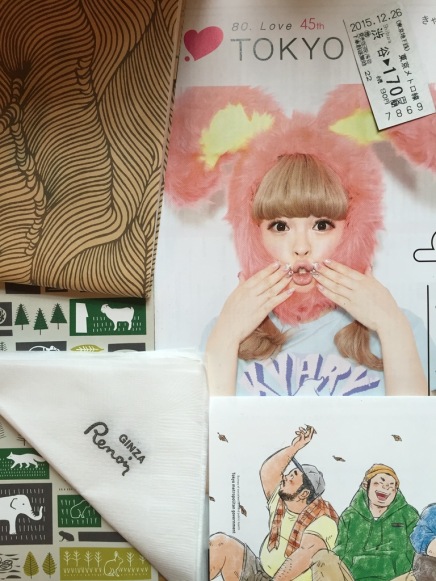
A good chunk of my twenties was spent on the streets and bars of Tokyo’s gay quarter, the notorious Shinjuku Nichome. Here, on six to ten city blocks, tiled buildings are piled high with tiny local gar bars, sex shops, gay manga, bear ramen stores and a rentboy-staffed octopus ball stand, poky dance clubs, basement “underwear lounges” and sexy underwear shops, two temples, a twenty four hour sauna, a party central all-night convenience store, cruising dudes and the men who love them.
It is a super-gay oasis in an otherwise super-straight city, a warren of seedy little streets and dark doorways, connections found and lost, lives and loves coming together, lust hanging in the air.


Above Cauro Hige and below, Inu Yoshi.
I had been sad to hear of the rumoured decline of the area, faced with the same challenges as gay bars everywhere, their role as meeting places under threat from the convenience and reassuring anonymity of phone apps.
Advocates, the most-loved bar by foreigners, had closed although I found it replaced by another gay bar, Aiiro, whose business model seemed to be a carbon copy.
Dragon and Arty Farty were still there, as was Word-Up, the foreigner-unfriendly “Japanese only” bar, as well as a host of smaller nights. I had been looking forward most to the FancyHIM Party, a wild Tokyo fashion folly unlike anything I have since elsewhere in the world where chic revellers turn up in the over-the-top homemade outfits. US singer AB Soto was appearing and I had seen him out on the town the night before.
But in the end, the evening took a different turn and I ended up instead with friends piled up inside one of the district’s little bars, up a dingy flight of stairs on a second storey landing. Zero One is one of the new generation of bars in the district targeted at Chinese guys and their fans; I saw at least two others, Taiwan Bar and Panda, as well.
At Zero One, its name derived from Chinese gay slang, we sat at the counter knocking back vodka with green tea while Taiwanese pop videos played. It was a fun, unexpected night.

There were other discoveries too. A new (to me) Latin themed “anticapitalist” bar was strung up with people power flyers and Zapatista posters. A women-only bar advertised monthly female-to-male transexual nights. A longstanding Thai restaurant (of which the area has several) had moved premises. The portly owner of a bar called Cholesterol had become famous in Taiwan as a “blowjob expert” and he was being mobbed by tourists asking for pictures. Chic new cafe-bar “Phonic Hoop” had opened up across the street and the ‘cruisy’ Starbucks on the corner of Yasukuni-dori now seemed suspiciously straight.

My favourite finding of all though was just outside Nichome proper, down the little lantern-strung shotengai (shopping street) across Yasukuni dori, leading down a gentle slope. Here, passing by on a bike from ‘the neighbourhood’ I found a bizarre little restaurant, announced with a statue of a cat eating spaghetti on an upside-down acrobat. It was late at night and the restaurant was closed, but my curiosity was piqued.
Peering in, I could make out the retro interior, littered with angel statues, more images of cats, marionettes, Joan Miro prints and circus memorabilia. I decided to come back in the daytime to explore. It was called Cafe Arles.
Cafe Arles, it turned out, had something of a cat theme. A live specimen greeted me at the door the next day and prowled lion-like under the tables where lone customers read newspapers at lunchtime or furtive couples whispered. One woman’s fur coat was slung nonchalantly across a stone cherub. Stale smoke hung in the air and Ella Fitzgerald was playing. I ordered the house special, the Neapolitan spaghetti, from the Japanese-only menu and was delighted to be served first a place of starters: one-third of a banana, still in its skin, a single maple syrup cookie and some nuts, as well as lemon tea in a bone china cup.

The restaurant had been there, it transpired, since 1972. And yet in all my Nichome nights, I had never found it. A district full of surprises.






















































